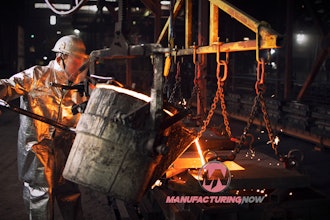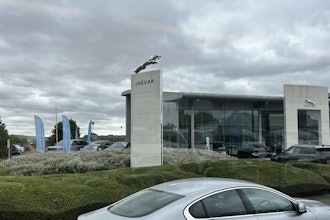Dresser-Rand Company recently designed and installed a complete waste heat recovery system at the Greater New Haven Water Pollution Control Authority (GNHWPCA). The project included engineering, construction and testing of the waste heat boiler, steam turbine generator set and condenser, ducting and valves.
Through a long term service agreement with GNHWPCA, Dresser-Rand will also maintain the facility, to achieve the guaranteed electrical production. The system is expected to produce 4.4 million kW hours of electricity per year.
Providing wastewater treatment for the residents of New Haven, Hamden, East Haven and Woodbridge, Conn., the GNHWPCA wanted to reduce its electricity costs, minimize future rate increases, and pass those savings on to their customers. The Dresser-Rand project uses waste heat from the wastewater treatment facility to produce steam, powering a Dresser-Rand 750 kW steam turbine generator at the East Shore Water Pollution Abatement Facility. As a result of the project, GNHWPCA expects to reduce its electricity costs by one-third. The GNHWPCA has received financing for 50% of the capital cost for project through the use of Clean Renewable Energy Bonds (CREB’s) at 0% interest for 16 years. The GNHWPCA also received a $300,000 incentive grant from CTDPUC, under Connecticut’s legislation for distributed energy facilities.
“With the nation’s focus on building renewable and alternative energy capabilities, there’s a push to extract all economically viable energy, including energy at water treatment plants,” said Peter Salvatore, Vice President, Global Field Operations at Dresser-Rand. “This project is illustrative of Dresser-Rand’s ‘turnkey’ approach, providing single-point responsibility, offering an efficient and effective project delivery, and providing added value for our clients. We estimate this type of power recovery solution could be viable for 200 similar facilities in the U.S. And while this project falls on the smaller end of the power scale, Dresser-Rand has equipment and capabilities exceeding 60MW.”
The GNHWPCA water treatment process involves removing sludge, or sewer system waste, from the water, reducing the moisture content to a combustible level, and burning the dried sludge in a multiple hearth furnace. The resulting exhaust gas is scrubbed to remove pollutants and then released to the atmosphere.
Dresser-Rand’s waste heat recovery solution routes the exhaust gas directly from the furnace to a waste heat boiler, creating steam. The steam powers the turbine generator set, producing electricity in a closed loop cycle. The exhaust gas is returned from the boiler to the scrubber and out the exhaust stack. The process is designed such that it does not change emissions and, therefore, does not impact the facility’s air quality permit. The system simply diverts the gas upstream of the scrubber, extracts a significant amount of the otherwise wasted heat and returns the gas back to the scrubber to continue its normal exhaust path.
Salvatore adds that, “One of Dresser-Rand’s corporate goals is to provide technology enabled solutions that positively impact the environment and the company is constantly seeking opportunities to further that goal.”
This project is Dresser-Rand’s first complete service installation at a sludge incineration facility.
“We designed, constructed and tested the system, and we trained the client’s personnel on operations,” Salvatore said. “Our long term service agreement with GNHWPCA requires us to maintain the plant, to achieve the guaranteed electrical production. To ensure we meet this requirement, the keystone of the maintenance agreement is Dresser-Rand’s proprietary ‘Performance, Diagnostics, and Consultation’ service, which monitors and analyzes the health of the plant and provides ’management-ready information’ upon which maintenance decisions are based.”


















